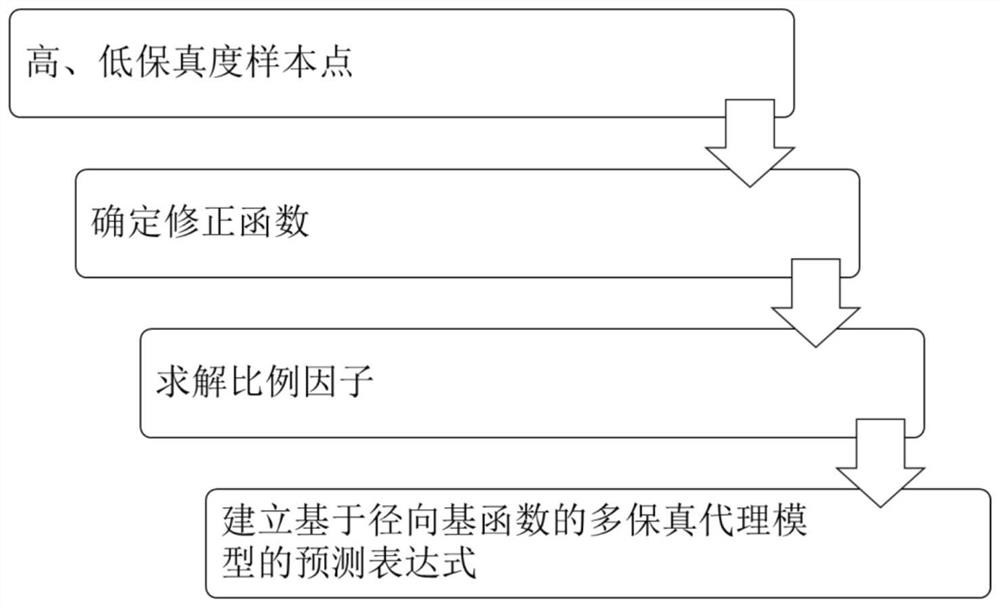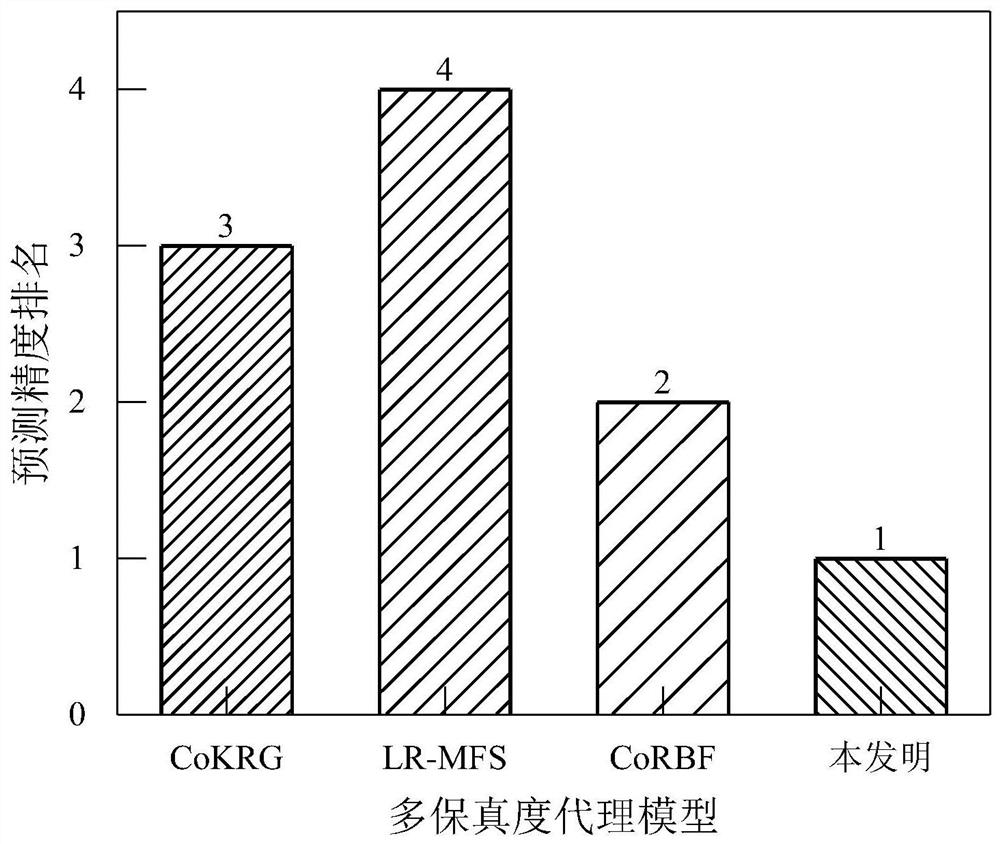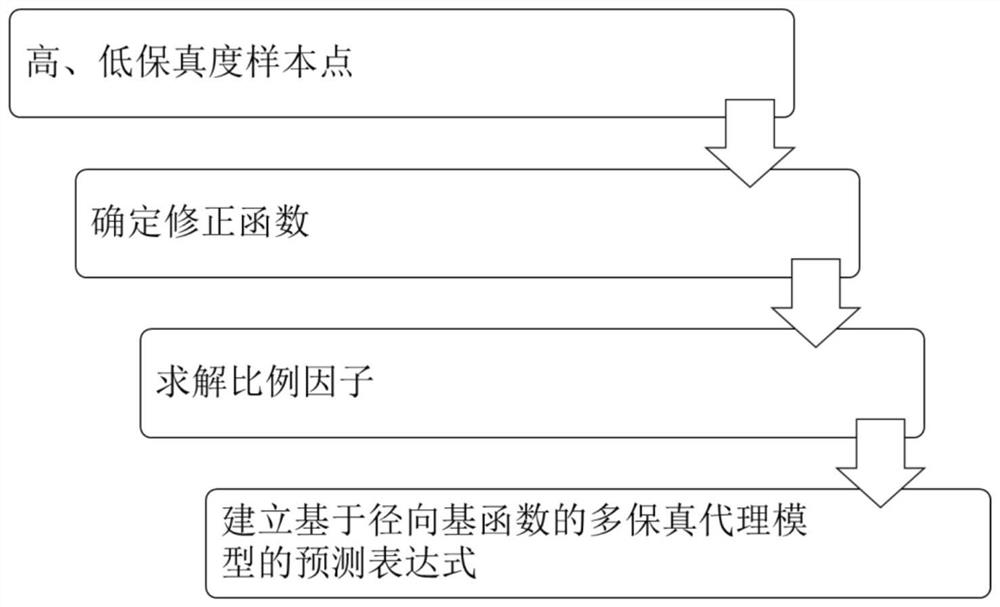Multi-fidelity agent model modeling method based on canonical correlation analysis
A canonical correlation analysis and surrogate model technology, applied in the field of multi-fidelity surrogate model modeling based on canonical correlation analysis, which can solve the problem that the measured data is difficult to obtain, the overall correlation of different fidelity models is not considered, and the quantity cannot be fully utilized. and other problems to achieve the effect of good prediction accuracy
- Summary
- Abstract
- Description
- Claims
- Application Information
AI Technical Summary
Problems solved by technology
Method used
Image
Examples
Embodiment Construction
[0014] The specific implementation manners of the present invention will be further described below in conjunction with the accompanying drawings and technical solutions.
[0015] Such as figure 1 As shown, a multi-fidelity proxy model modeling method based on canonical correlation analysis of the present invention specifically includes the following steps:
[0016] (1) Estimate the overall correlation between high and low fidelity models
[0017] First, high-fidelity and low-fidelity model inputs are drawn from the high-fidelity and low-fidelity model design spaces, respectively. and Represent a high-fidelity and low-fidelity training input, respectively, where ndv is the dimensionality of the problem. and represent the responses to a high-fidelity and low-fidelity training input, respectively. Represents a high-fidelity input matrix whose row vector is a high-fidelity input, Indicates the mth (m=1,2,...,M) high-fidelity input, and there are M high-fidelity traini...
PUM
 Login to View More
Login to View More Abstract
Description
Claims
Application Information
 Login to View More
Login to View More - R&D
- Intellectual Property
- Life Sciences
- Materials
- Tech Scout
- Unparalleled Data Quality
- Higher Quality Content
- 60% Fewer Hallucinations
Browse by: Latest US Patents, China's latest patents, Technical Efficacy Thesaurus, Application Domain, Technology Topic, Popular Technical Reports.
© 2025 PatSnap. All rights reserved.Legal|Privacy policy|Modern Slavery Act Transparency Statement|Sitemap|About US| Contact US: help@patsnap.com



